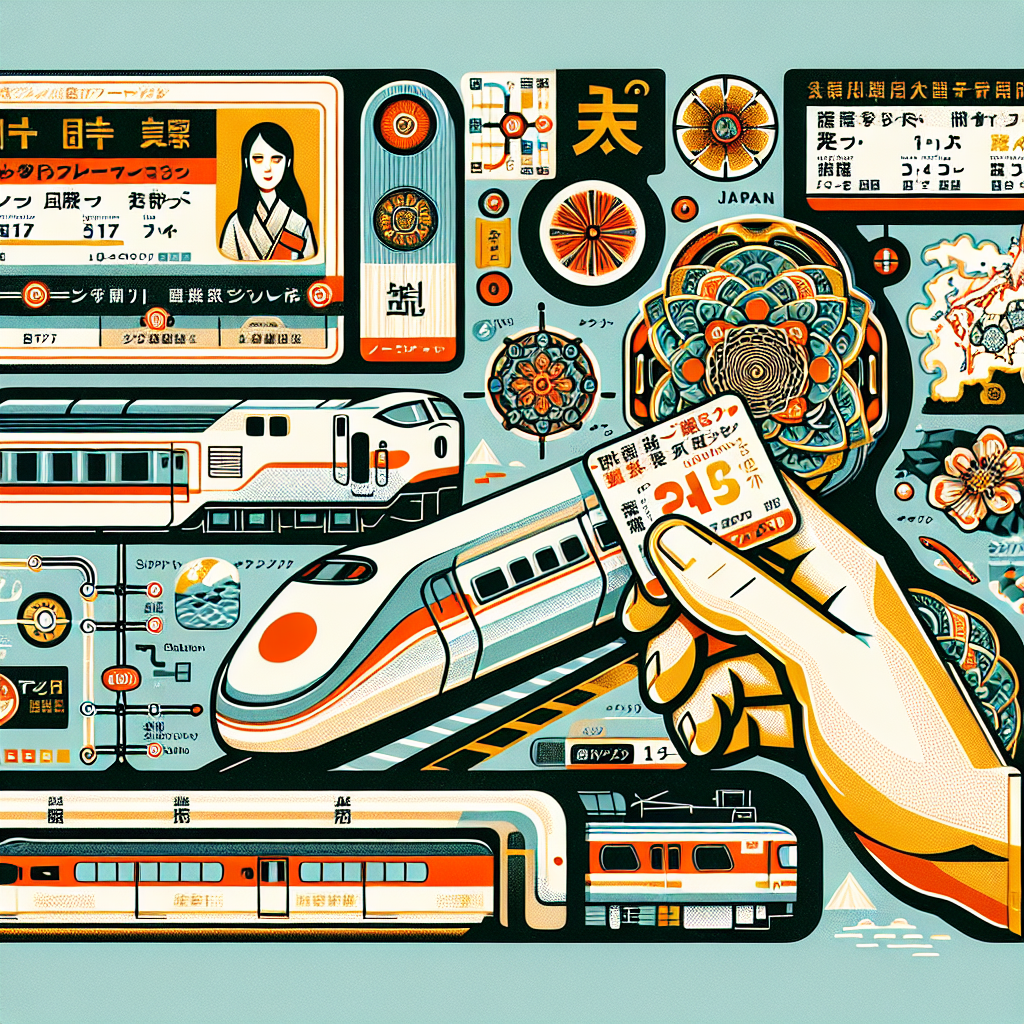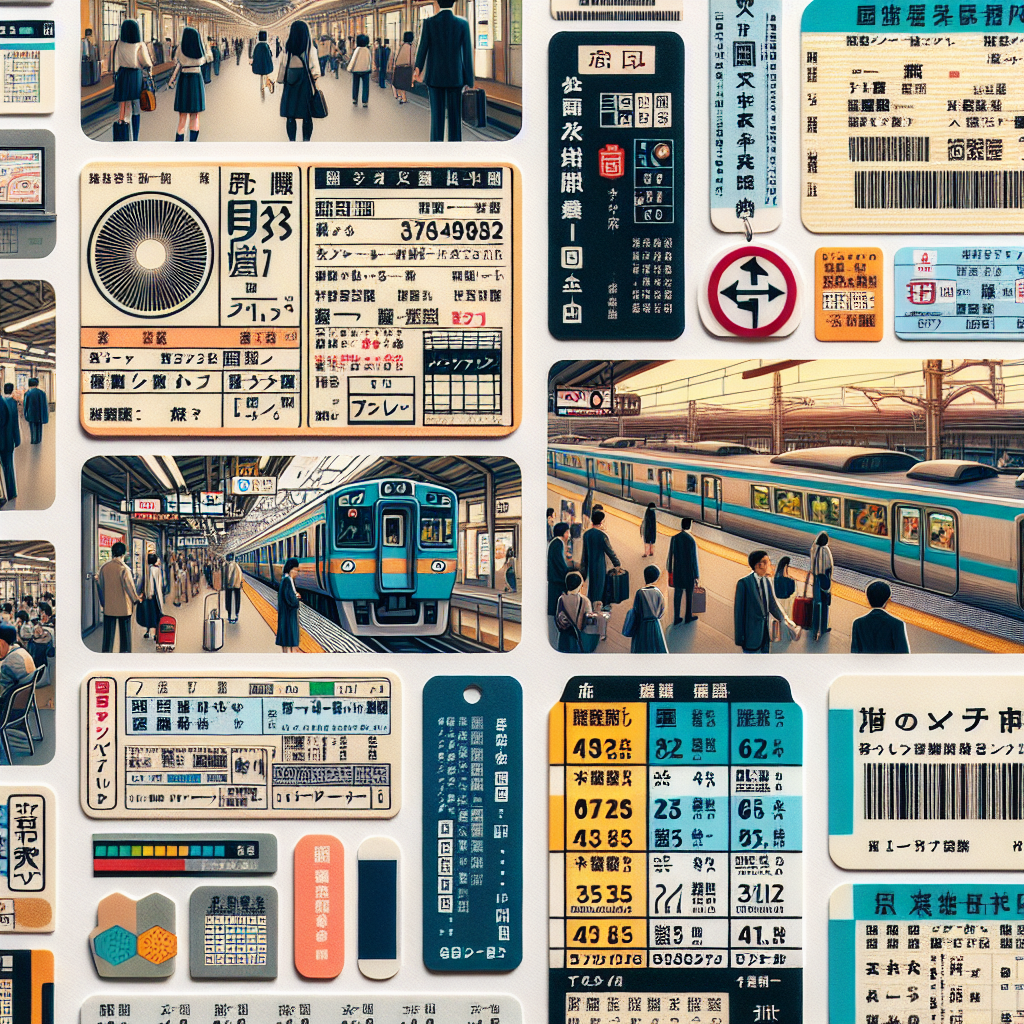-
Table of Contents
“Unlock Japan: Your Essential Guide to Train Tickets and Rail Passes!”
Explore the ultimate Guide to Japanese train tickets and rail passes to make your travel seamless and enjoyable! Don’t miss out on the best options for your journey. Start planning your adventure now! Learn more here.
Introduction
Japan’s extensive and efficient rail network is a cornerstone of its transportation system, making it essential for travelers to understand the various ticketing options available. This guide provides a comprehensive overview of Japanese train tickets and rail passes, detailing the types of tickets, pricing structures, and the benefits of using rail passes like the Japan Rail Pass. Whether you’re planning a short trip within a city or an extensive journey across the country, this guide will help you navigate the complexities of Japan’s rail system, ensuring a smooth and enjoyable travel experience.
Types of Japanese Train Tickets: A Comprehensive Overview
When it comes to navigating Japan’s extensive rail network, understanding the different types of train tickets available can make your travel experience much smoother and more enjoyable. Japan is renowned for its punctual and efficient train system, which includes everything from high-speed Shinkansen to local commuter trains. With so many options, it’s essential to know which ticket suits your travel needs best.
First and foremost, let’s talk about the standard one-way tickets. These are the most straightforward option, allowing you to travel from one station to another without any frills. You can purchase these tickets at ticket machines or ticket counters in train stations. The machines are user-friendly, often available in multiple languages, and provide a quick way to get your ticket. If you’re planning a short trip or just need to hop on a train for a single journey, this is likely the best choice for you.
In addition to one-way tickets, round-trip tickets are also available. These tickets are perfect for travelers who plan to return to their original station after a day of exploration. Not only do they save you the hassle of buying two separate tickets, but they can also be slightly cheaper than purchasing two one-way tickets. This option is particularly useful for day trips to nearby cities or attractions.
For those who plan to travel extensively within a specific region, regional passes can be a game-changer. These passes allow unlimited travel on designated lines within a certain area for a set number of days. For example, the Kansai Area Pass covers popular destinations like Kyoto, Osaka, and Nara, making it an excellent choice for travelers eager to explore the cultural heart of Japan. Similarly, the JR East Pass offers unlimited travel in the eastern regions, including Tokyo and surrounding areas. These passes not only save you money but also provide the flexibility to hop on and off trains as you please.
If you’re looking to experience the iconic Shinkansen, or bullet train, you might want to consider the Japan Rail Pass. This pass is a fantastic option for international tourists, allowing unlimited travel on most JR trains, including the Shinkansen, for a set number of days. It’s particularly beneficial for those planning to travel between major cities like Tokyo, Kyoto, and Hiroshima. However, it’s important to note that the Japan Rail Pass must be purchased before arriving in Japan, so be sure to plan ahead.
For shorter trips or those who prefer a more spontaneous travel style, the IC cards, such as Suica or Pasmo, are incredibly convenient. These rechargeable smart cards can be used on trains, buses, and even in some shops. Simply tap your card at the ticket gate, and you’re on your way! This option eliminates the need to buy individual tickets for each journey, making it perfect for travelers who want to explore at their own pace.
In conclusion, understanding the various types of train tickets and passes available in Japan can significantly enhance your travel experience. Whether you opt for a simple one-way ticket, a convenient regional pass, or the all-encompassing Japan Rail Pass, each option offers unique benefits tailored to different travel styles. By choosing the right ticket for your journey, you can focus on enjoying the breathtaking scenery and rich culture that Japan has to offer, making your trip truly unforgettable.
How to Choose the Right Rail Pass for Your Travel Needs

When planning a trip to Japan, one of the most exciting aspects is navigating the extensive and efficient rail system. With a variety of train tickets and rail passes available, it can be a bit overwhelming to determine which option best suits your travel needs. However, with a little guidance, you can easily find the perfect pass to enhance your journey through this beautiful country.
First and foremost, consider the duration of your stay and the regions you plan to visit. If you’re only spending a few days in a single city, such as Tokyo or Kyoto, individual tickets for local trains and subways might be the most economical choice. These tickets allow you to explore the city at your own pace without committing to a longer-term pass. On the other hand, if your itinerary includes multiple cities, such as Osaka, Hiroshima, and Nagoya, a rail pass could save you both time and money.
One of the most popular options for travelers is the Japan Rail Pass. This pass is particularly advantageous for those planning to travel extensively across the country. Available for 7, 14, or 21 consecutive days, the Japan Rail Pass grants unlimited travel on most JR trains, including the famous Shinkansen (bullet trains). However, it’s important to note that the pass must be purchased before arriving in Japan, so be sure to plan ahead. If you’re considering this option, think about your travel route and how many long-distance trips you’ll be making. The more you travel, the more you’ll benefit from the pass.
In addition to the Japan Rail Pass, there are regional passes that cater to specific areas. For instance, if you’re focusing on the Kansai region, the Kansai Thru Pass allows unlimited travel on various trains and buses in cities like Kyoto, Osaka, and Nara. Similarly, the JR East Pass covers the eastern part of Japan, including popular destinations like Nikko and Sendai. These regional passes can be a fantastic way to explore a specific area without the need for a nationwide pass, especially if your travel plans are more localized.
Another factor to consider is the type of train services you’ll be using. While the Japan Rail Pass covers most JR trains, some private railways and buses may not be included. If you plan to use these services frequently, it might be worth looking into individual tickets or specific passes that cover those lines. Additionally, if you’re traveling during peak seasons, such as cherry blossom season or Golden Week, it’s wise to book your seats in advance, as trains can fill up quickly.
As you weigh your options, don’t forget to factor in convenience. Many rail passes offer the added benefit of allowing you to skip ticket lines at stations, which can save you valuable time during your travels. Moreover, some passes come with additional perks, such as discounts at attractions or free transportation on certain buses, making them even more appealing.
Ultimately, choosing the right rail pass for your travel needs in Japan boils down to understanding your itinerary and travel style. By considering the duration of your stay, the regions you wish to explore, and the types of trains you’ll be using, you can confidently select a pass that will enhance your experience. With the right rail pass in hand, you’ll be ready to embark on an unforgettable adventure through Japan’s stunning landscapes and vibrant cities.
Tips for Navigating the Japanese Rail System Efficiently
Navigating the Japanese rail system can be an exhilarating experience, especially for first-time travelers. With its extensive network of trains, including the famous Shinkansen or bullet trains, Japan offers a unique blend of efficiency and comfort that makes getting around a breeze. However, to make the most of your journey, it’s essential to understand a few tips that can help you navigate the system efficiently.
First and foremost, familiarize yourself with the different types of trains available. Japan’s rail system is not just about speed; it also offers various services, from local trains that stop at every station to express trains that whisk you to your destination in no time. Understanding the differences between these services can save you both time and frustration. For instance, if you’re traveling between major cities, the Shinkansen is your best bet, while local trains are perfect for exploring smaller towns and rural areas.
Once you have a grasp of the train types, it’s time to consider your ticket options. Japan offers a variety of tickets and rail passes, catering to different travel needs. If you plan to explore multiple cities, the Japan Rail Pass can be a fantastic investment, allowing unlimited travel on most JR trains for a set period. However, if your itinerary is more localized, individual tickets or regional passes might be more economical. Be sure to calculate your travel plans in advance to determine which option suits you best.
When purchasing tickets, you have several options. You can buy them at ticket machines, which are often available in multiple languages, or at ticket counters where staff can assist you. If you’re unsure about the process, don’t hesitate to ask for help; Japanese people are known for their politeness and willingness to assist travelers. Additionally, consider downloading a rail app that provides real-time information on train schedules and platform changes. This can be a lifesaver, especially in busy stations.
As you embark on your journey, keep an eye on the train schedules displayed on electronic boards throughout the stations. These boards provide crucial information, including train times, platforms, and any delays. It’s also wise to arrive at the station a bit early, as navigating large train stations can take time. Many stations are equipped with shops and restaurants, so you can grab a snack or souvenir while you wait.
Another tip for efficient travel is to be mindful of peak hours. Trains can get crowded during rush hours, typically from 7:30 to 9:30 AM and 5:00 to 7:00 PM. If possible, try to schedule your travel outside these times to enjoy a more comfortable ride. Additionally, when boarding the train, be prepared to move quickly. Japanese trains operate on a strict schedule, and delays can disrupt the entire system. Therefore, it’s best to board promptly and find your seat without lingering in the aisles.
Lastly, embrace the culture of silence on trains. While it’s perfectly acceptable to have conversations, keeping your voice down is appreciated. Many travelers use this time to relax, read, or even take a quick nap. By following these simple tips, you’ll find that navigating the Japanese rail system can be a smooth and enjoyable experience. With a little preparation and an open mind, you’ll be well on your way to exploring the beautiful landscapes and vibrant cities of Japan, all while enjoying the efficiency of its remarkable rail system.
Conclusion
In conclusion, understanding Japanese train tickets and rail passes is essential for navigating the country’s extensive and efficient rail network. With options ranging from single journey tickets to various rail passes like the Japan Rail Pass, travelers can choose the most cost-effective and convenient means of transportation based on their itinerary. Familiarity with the ticketing system, including the types of trains and their respective services, enhances the travel experience, allowing for seamless exploration of Japan’s diverse regions. Proper planning and knowledge of ticket options can lead to significant savings and a more enjoyable journey.


